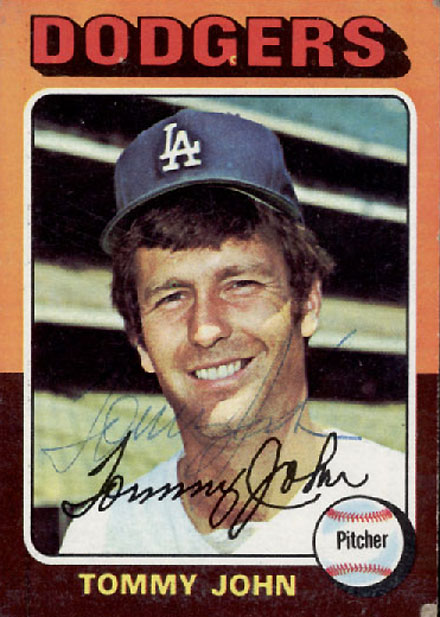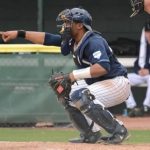
Tommy John surgery required for top Yankees prospect
Top Yankees prospect and shortstop Gleyber Torres injured his left elbow during a Class AAA game with the Scranton/Wilkes-Barre Railriders, triggering an early end to his season while also dealing a blow to the Yankees’ potential fall roster. Torres’ tore his ulnar collateral ligament (UCL) as he attempted to score from second base, sliding head first into home only to have the catcher land on his elbow.
Most often we hear that a player has torn his/her UCL from repetitive throwing and overuse of the elbow in sports such as baseball and javelin. Contact sports such as football and rugby and overhead sports such as tennis and volleyball may lead to a UCL injury of the elbow as well. UCL tears can occur with a single hard throw and the athlete often senses a “pop” or tearing of the ligament; however, most UCL tears occur from chronic tearing and stretching of the ligament overtime from overuse. Symptoms include progressive medial (inner) elbow pain with throwing and decreased throwing velocity and accuracy. Risk factors include overuse (ignoring pitch count recommendations), poor physical conditioning, fatigue, throwing through pain, improper throwing mechanics, and in Torres’ case, dislocation. According to news reports, Torres will undergo UCL reconstruction surgery, also known as Tommy John Surgery. Team doctors are hopeful that because Torres is a position player and not a pitcher, his recovery will not require a year, which is typical for most throwers.
The UCL helps to maintain the normal relationship between the humerus (arm bone) and the ulna (one of the forearm bones), and therefore helps to stabilize the arm during activities such as throwing. A UCL injury can happen as a sudden tear, or can occur gradually as the ligament stretches out over time from repetitive stress. When torn, the UCL usually does not heal sufficiently on its own, or it may heal in a lengthened position, thus compromising the stabilizing capacity of the ligament. Therefore, UCL injuries usually require surgical intervention for people who want to return to throwing or have persistent pain.
Signs and symptoms of an ulnar collateral ligament injury may include but are not limited to:
• Pain and tenderness on the inner side of the elbow, especially when trying to throw
• A pop, tearing, or pulling sensation noted at the time of the injury
• Swelling and bruising (after 24 hours) at the site of injury at the inner elbow and upper forearm if there is an acute tear
• Inability to throw at full speed and loss of ball control
• Elbow stiffness and an inability to straighten the elbow
• Numbness or tingling in the fingers and hands
• Clumsiness and weakness of hand grip
Non-surgical treatment of a UCL injury consists of routine medication and ice to relieve pain and to reduce swelling of the elbow. Rest from throwing and other aggravating activities is required along with a gradual rehabilitation that includes physical therapy, gradual resumption of throwing with an interval throwing program, and instruction on proper throwing mechanics.
Surgical treatment is a limited open procedure. Most surgeons drill tunnels (holes in the humerus and ulna bones to pass and fix the new UCL tendon graft); however, these holes/tunnels into the bone increase the morbidity and risk of fracture from the surgery. For these reasons, Dr. Chudik developed his own technique that avoids drilling large holes/tunnels into the bone, and instead he attaches the tendon graft to the surface of the bone to reconstruct the UCL ligament and restore the function of the UCL.
Following surgery, the elbow is immobilized for six weeks—first in a splint, followed by an elbow brace that allows us to perform physical therapy and move the elbow during the first six weeks. Physical therapy begins two to three days after surgery and continues for four to six months. Return to activity time is dependent upon the type of sport or activity of the individual. Heavy lifting requires a minimum recovery of four months, while a return to overhead throwing and hitting sports can require as much as nine to 12 months of recovery. Torres’ team physicians say he will be ready by the start of the 2018 season.
According to Dr. Steven Chudik with the Shoulder, Knee and Sports Medicine Injury Clinic, in Westmont and Western Springs, UCL reconstruction can allow athletes to return to their sports and throwing activities; however, UCL reconstruction does not guarantee a return to the athlete’s level of performance prior to the injury. Athletes are better off preventing injury to their UCL and avoiding surgery.
If you or someone you know suffers from any of the symptoms described earlier, consider scheduling an appointment with Dr. Steven Chudik. He has been treating patients with UCL and other sports, shoulder and knee injuries since 2002 throughout the Chicago area—including Downers Grove, Burr Ridge, and Addison—as well as patients from both coasts. He has convenient hours and clinic locations plus onsite X-ray and MRI imaging capability. To schedule an appointment with Dr. Chudik, call 630-324-0402, or schedule online.
The opinions provided by Dr. Chudik are just that, opinions. However, they are based on more than 15 years of experience treating athletes with elbow injuries and on the information available at the time of publication. Dr. Chudik did not perform a formal physical assessment and/or diagnosis on Gleyber Torres.








